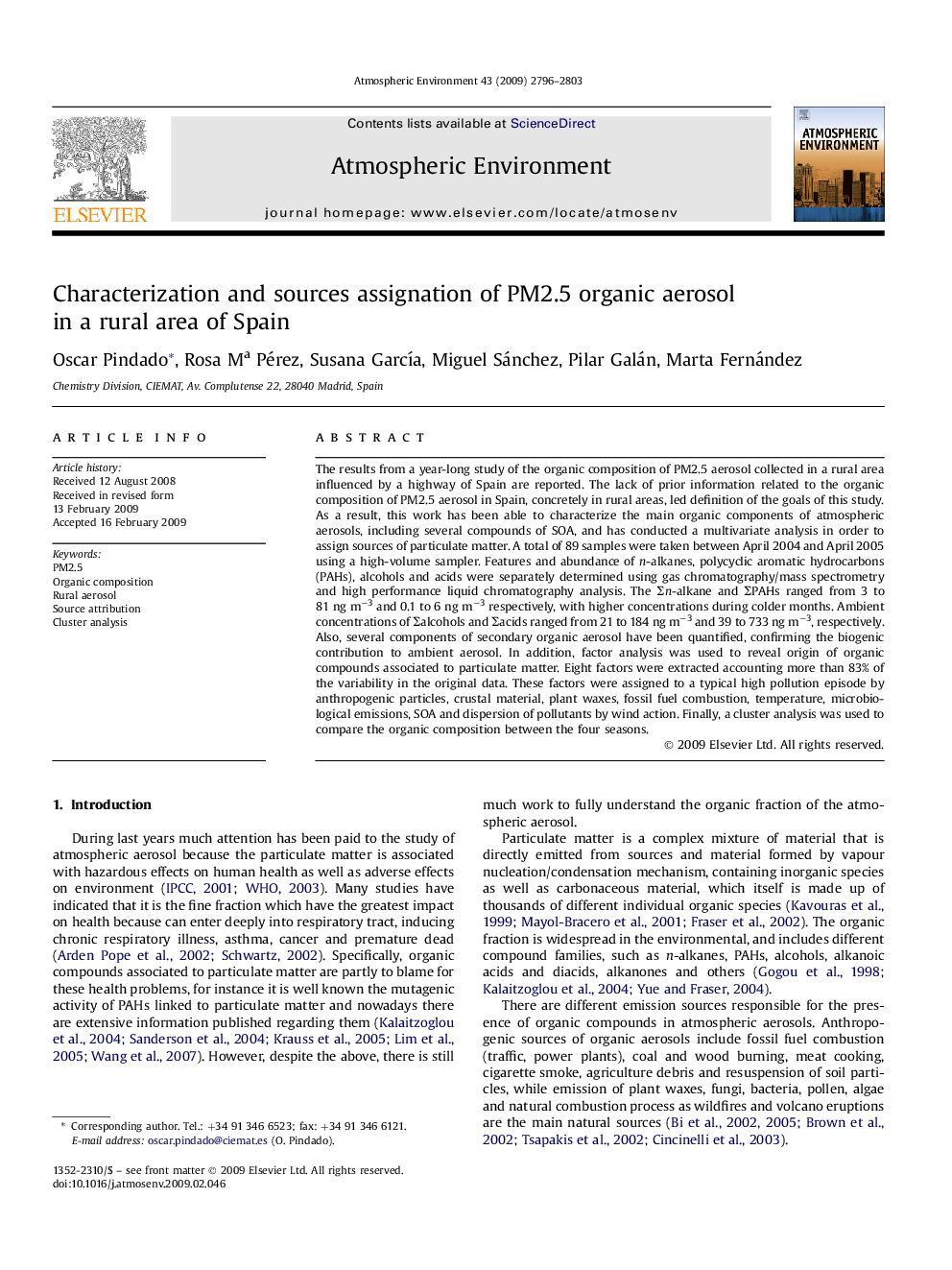| Article ID | Journal | Published Year | Pages | File Type |
|---|---|---|---|---|
| 4441951 | Atmospheric Environment | 2009 | 8 Pages |
The results from a year-long study of the organic composition of PM2.5 aerosol collected in a rural area influenced by a highway of Spain are reported. The lack of prior information related to the organic composition of PM2.5 aerosol in Spain, concretely in rural areas, led definition of the goals of this study. As a result, this work has been able to characterize the main organic components of atmospheric aerosols, including several compounds of SOA, and has conducted a multivariate analysis in order to assign sources of particulate matter. A total of 89 samples were taken between April 2004 and April 2005 using a high-volume sampler. Features and abundance of n-alkanes, polycyclic aromatic hydrocarbons (PAHs), alcohols and acids were separately determined using gas chromatography/mass spectrometry and high performance liquid chromatography analysis. The Σn-alkane and ΣPAHs ranged from 3 to 81 ng m−3 and 0.1 to 6 ng m−3 respectively, with higher concentrations during colder months. Ambient concentrations of Σalcohols and Σacids ranged from 21 to 184 ng m−3 and 39 to 733 ng m−3, respectively. Also, several components of secondary organic aerosol have been quantified, confirming the biogenic contribution to ambient aerosol. In addition, factor analysis was used to reveal origin of organic compounds associated to particulate matter. Eight factors were extracted accounting more than 83% of the variability in the original data. These factors were assigned to a typical high pollution episode by anthropogenic particles, crustal material, plant waxes, fossil fuel combustion, temperature, microbiological emissions, SOA and dispersion of pollutants by wind action. Finally, a cluster analysis was used to compare the organic composition between the four seasons.
